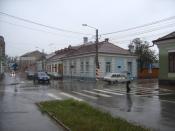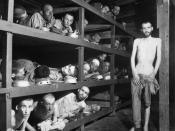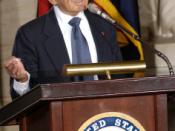In Elie Wiesel's memoir "Night", Wiesel tells of his horrifying experience in a Nazi concentration camp as a boy of 15. Deported by the Nazis, Wiesel and his family were transported in cattle cars to Auschwitz where he and his father were separated from his mother and sister, who they never saw again. At this point he starts his excruciating journey into the terror of the holocaust. In portraying his story, Wiesel uses a variety of literary devices including foreshadowing, poetic language, and a first person perspective to help capture the impact of his journey.
In "Night", Wiesel uses the techniques of foreshadowing to engage the reader and to build a feeling of dread and despair. In the beginning of the book, Moshe the Beadle immediately foreshadows the trouble that is going to befall the Jews. He had been deported for being a foreign Jew and he experienced all the evils of the concentration camps before escaping.
Moshe the Beadle warns the townspeople of the immediate danger that they face, but the townspeople take him for crazy and pity him. The second occurrence takes place in chapter 1 of the book when Elie says, "Poor Father! Of what then did you die?" The reader knows that his father will die, but needs to learn where and how his death will occur. Later, Wiesel tells of Madame Schachter, a woman aboard a cattle car that continually screams "Fire! Look at the flames!" She, like Moshe, is warning the Jews of the crematoria in their future. Even though the men and the women aboard the cattle car want to believe that she is just crazy, part of each of them now is scared of what lies ahead. Wiesel uses foreshadowing effectively both to build a sense of impending doom...


